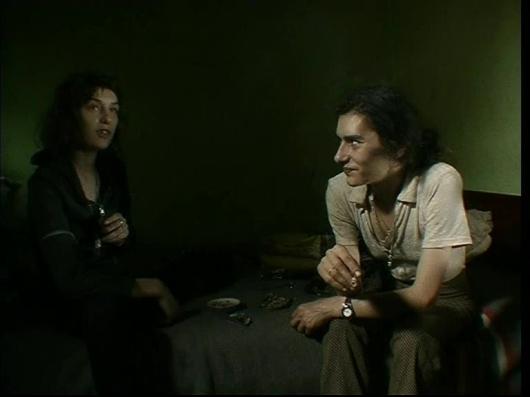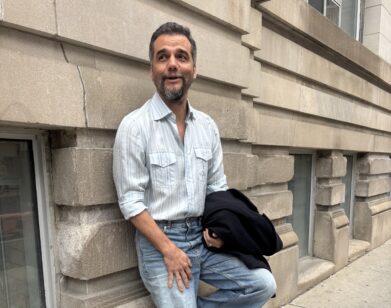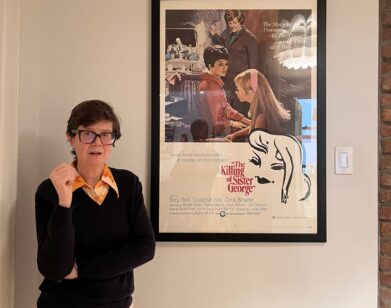Pedro Costa on the Secrets of Warhol

ANDY WARHOL LAUNCHING EDIE SEDGWICK IN BEAUTY #2
As far as epic minimalism in film goes, Andy Warhol both laid the ground work and set the standard. His prolific mid-1960s output defined very straightforward single-take films depicting exactly what their titles imply—Sleep (1963, 321 minutes), Empire [The Empire State Building] (1964, 485 minutes), Taylor Mead’s Ass (1965, 70 minutes). With the introduction of synchronized sound, he added another layer of realism and meaning to his aggrandizement of mundane reality and produced classics like Chelsea Girls and the Paul Morrissey directed trilogy of Flesh, Trash, and Heat.
While the films’ receptions were famously divisive at the time—reviled by some critics and avant-garde filmmakers (director Stan Brakhage), celebrated by others (Jonas Mekas)—looking at the films now, it is easy to spot the origins for what is popular international festival and art house scenes. In the same way, you could trace almost every sub-genre of alternative rock music to a song by the Velvet Underground. Long takes, simple scene-to-scene editing, fetishization of fringe-society lifestyles, the successful illusion that people are simply being filmed and not performing a rehearsed and written role—these are the qualities of the best recognized international films today. From the formal minimalism of Apichatpong Weerasethakul, Tsai Ming-Liang and Jia Zhangke, to the “realism” of the Dardenne brothers and the tenets behind the mostly-aborted Dogme95 experiment—Warhol’s films can make a not-unjust claim to be the seminal ancestor.
Among this cadre of filmmakers stands Pedro Costa, whose decision to film his last three major works (In Vanda’s Room, Colossal Youth, Ne Change Rien) mostly by himself with a digital video camera has resulted in an entrancing minimalist style, which allows characters’ realities to unfurl before our eyes, completely subservient to the primacy of the image. Recently in discussing his trilogy, shot in the Cape Verdean shantytown of Lisbon (released today by Criterion as “Letters from Fontainhas”), the director, devoted cineaste and occasional lecturer, spoke about the foundations of his metaphorical “filmhouse” and the special room reserved for Warhol.
EUGENE KOTLYARENKO: Two movies I thought of when watching crack addicts sit and talk for long stretches in In Vanda’s Room were Andy Warhol’s Trash (the definitive rumination on junkie life) and Chantal Akerman’s Jeanne Dielmann (following the daily exploits of a Belgian housewife.) LEFT: PORTRAIT BY VALERIE MASSADIAN
COSTA: I have to confess Trash is not one of my favorites.
KOTLYARENKO: I can understand that, but I’d be surprised if it never crossed your mind.
COSTA: Yes, well, of course Akerman and Warhol and [Jean-Marie] Straub and Godard and more… Everything has its place in my filmhouse. Actually it’s exactly like a house. It has the foundations that I cannot avoid—The Chaplins, The Fords, the Ozus and the Mizoguchis. You have to go there one way or another—every filmmaker does. Then you can go into the rooms. And a room that I’m very drawn to is that of Warhol.
KOTLYARENKO: What about it is special to you?
COSTA: I’m a bit afraid to talk about him because I don’t know anything about Warhol. No one does: He was the maximum of secrecy and the maximum of being public. It’s interesting because he exhibits exactly the same thing that the town of Fontainhas does: he hides so well and he shows everything at the same time. The neighborhood and the people in it are exactly the same. They are absolutely isolated, elusive, secretive, lost and they can really disappear from one second to the other, they can die or vanish easily. But at the same time they shout, they show themselves, they like to be seen, they dance. This feature is one of cinema’s foundations, too. How are we organizing the secrecy and what are we going to show in the film? And for me Warhol is the most consistent in that.
There is a certain gravitas to his work. It’s not a weight… it’s not serious or academic. His gravitas is very human, on the verge of death; all of the films I like have this dangerous quality and all of his Superstars are so fragile.
KOTLYARENKO: it seems that today, more than ever, people are looking at Warhol’s films, from all types of backgrounds. STILL FROM IN VANDA’S ROOM
COSTA: Maybe, but he’s never really shown like the typical classic filmmakers. I mean there are retrospectives, but every time I have a chance to see a Warhol film, half the theater walks out, just like in a Straub or an Akerman film. It’s not like a painting in the MoMA —that people will see. But the films, well no one knows, no one cares.
KOTLYARENKO: Well, film is a time-based medium with a captive audience… you’re not forced to sit for several hours in front a painting.
COSTA: Yes, but that time is where the greatness is. Much more than anything it is the gravity of mere seconds, that frighten me. Like in the middle of a long shot inChelsea Girls, just three or four seconds that are absolutely a matter of life and death. It’s not the entire duration of the film that’s important, it can be just that one second, and he knew that I think. I think he was a very rational guy. It seems like he was working with a kind of non-direction, but actually there is something there. In a film I absolutely love, Beauty #2, you hear the voice of a guy directing Edie Sedgwick, so there is direction and there is some mise en scene and everything goes towards a certain point in the film, a very serious moment. And those moments can be very frightening, exciting, or exhilarating. I’m very very enthusiastic about him.
KOTLYARENKO: I think with good reason.
COSTA: It’s a shame that young people, don’t see the films. It would be amazing to see Chelsea Girls and then John Ford’s The Searchers. They’re about the same thing.
LETTERS FROM FONTAINHAS COMES OUT TODAY ON CRITERION. AN EXTENDED INTERVIEW WITH PEDRO COSTA ABOUT HIS WORK IS ON THE ART IN AMERICA BLOG.
LAST SUNDAY “I JUST WANT TO WATCH” OPENED AT THE WARHOL MUSUEM IN PITTSBURGH. THE LONG-TERM EXHIBITION FEATURES PROJECTIONS OF HIS MAJOR FILM WORKS, THROUGH MARCH 26, 2017.






